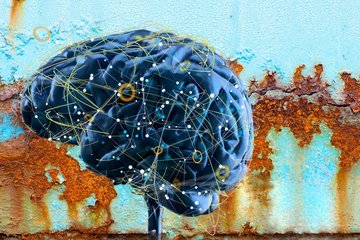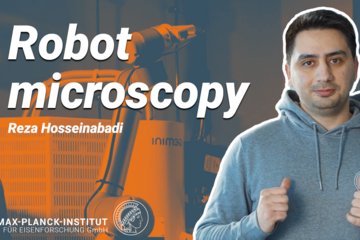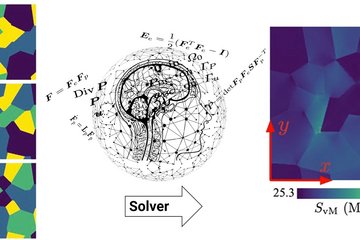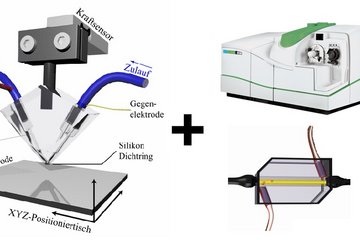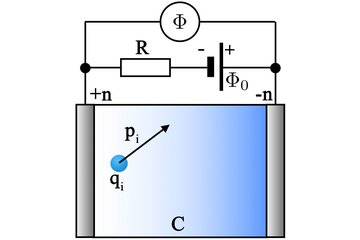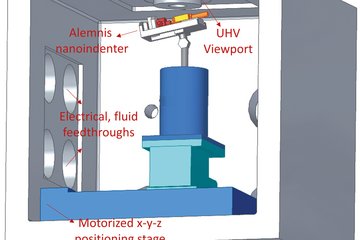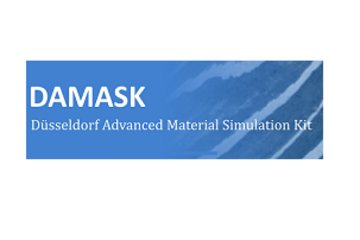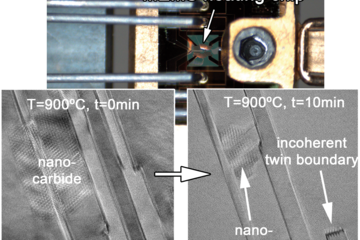All genres
41.
Talk
Directionally Solidfied Nanostructured Materials: Properties and Applications. International Bunsen Discussion Meeting: Modern electrochemistry of new materials, Rathen, Germany (2006)
42.
Talk
Gold nanostructures by directional solid-state decomposition. Bunsentagung 2006, Erlangen, Germany (2006)
43.
Talk
Metallic Nanoarrays for application in Nanoelectronics and Nanosensor Technology. 4th Spring meeting of the International Society of Electrochemistry, Singapur, Singapur (2006)
44.
Talk
Directionally solidified eutectics as a route for the formation of self organised nanostructures. 56rd Meeting of the International Society of Electrochemistry, Busan, South Korea (2005)
45.
Talk
Gold Nanowire Arrays via Directional Solid-state Decomposition. EUROMAT 2005, Prag, Czech Republic (2005)
46.
Talk
Formation of self-organised nanostructures from directionally solidified eutectic alloys. 12th International Symposium on Metastable and nano Materials (ISMANAM), Paris, France (2005)
47.
Talk
Electrode Arrays of Nanoscopic Single Crystals. 207th Meeting of The Electrochemical Society, Québec City, Canada (2005)
48.
Talk
Preparation of One-Dimensionally Structured Electrode Materials by Directional Solidification. 207th Meeting of The Electrochemical Society, Québec City, Canada (2005)
49.
Talk
Directional Solidification as a Novel Route to Nanoelectrode Arrays. 5th International Symposium on Electrochemical Micro & Nanosystem Technologies, Tokyo, Japan (2004)
50.
Talk
Elektrochemie für und an Nanoelektrodenarrays. 79. AGEF Seminar - 25 Jahre Elektrochemie, Düsseldorf, Germany (2004)
51.
Poster
Selective Phase Dissolution of NiAl-Mo Directionally Solidified Eutectic Alloys. 7th International Symposium on Electrochemical Micro- and Nanosystems, Ein-Gedi, Israel (2008)
52.
Poster
A novel approach for the synthesis of nanowires in iso-oriented arrays. Bunsentagung 2008, Saarbrücken, Germany (2008)
53.
Poster
Mechanical Behaviour of the NiAl-W Eutectic Alloys. EUROMAT 2007, European Congress and Exhibition an Advanced Materials and Processes, Nürnberg, Germany (2007)
54.
Poster
Metallic Nanostructures Self-organisation during Directional Solidification of Eutectics. GDCh Wissenschaftsforum 2007, Ulm, Germany (2007)
55.
Poster
Gold Nanostructures through Directional Eutectoid Transformation. 92. AGEF-Seminar DFG-SPP 1165, „Elektrochemische Aspekte von Nanodrähten und Nanoröhren“, Düsseldorf, Germany (2007)
56.
Poster
Self-organised Metallic Nanostructures via Directional Solidification of Eutectics. 92. AGEF-Seminar DFG-SPP 1165, „Elektrochemische Aspekte von Nanodrähten und Nanoröhren“, Düsseldorf, Germany (2007)
57.
Poster
Overview of Nanoscopic Morphologies Accessible Through Electrochemical Processing of Directionally Solidified Eutectic Alloys. 92. AGEF-Seminar DFG-SPP 1165, „Elektrochemische Aspekte von Nanodrähten und Nanoröhren“, Düsseldorf, Germany (2007)
58.
Poster
Self-organised Metallic Nanostructures via Directional Solidification of Eutectics. DFG-SPP 1165 Statusseminar, Fulda, Germany (2007)
59.
Poster
A combined method for the production of self-organised metallic nano-structures. 6th International Symposium on Electrochemical Micro & Nanosystem Technologies, Bonn, Germany (2006)
60.
Poster
Microstructure and mechanical properties of Fe–Al–Nb eutectic alloys. 3rd Discussion Meeting on the Development of Innovative Iron Aluminium Alloys, Mettmann, Germany (2006)


